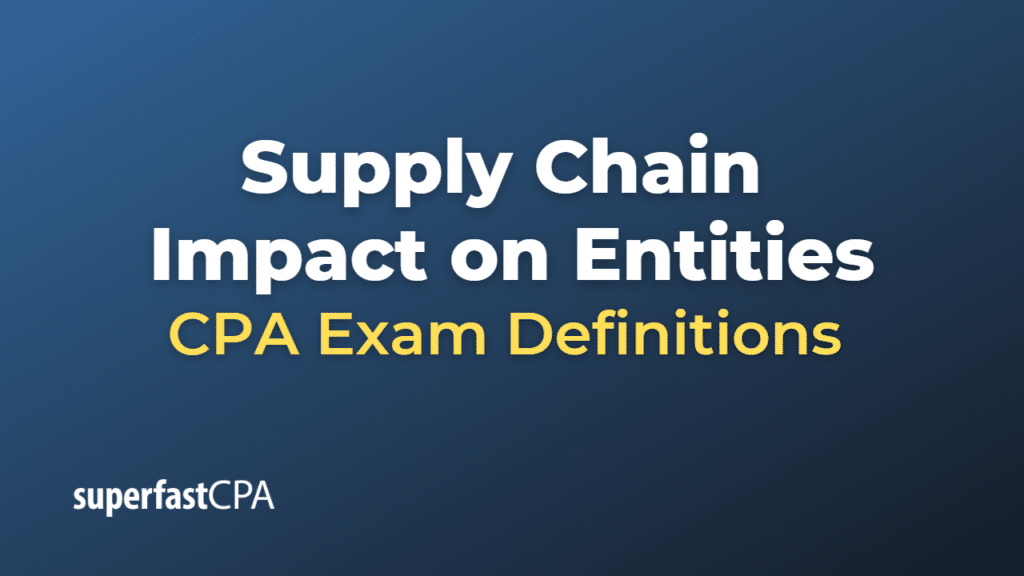Supply Chain Impact on Entities
Supply chain factors can impact an entity, its operations, and the inherent risk of material misstatement in its financial statements. Supply chain factors refer to the various elements and risks associated with the procurement, production, and distribution of an entity’s products or services, which can influence its operating environment and financial reporting.
Some ways in which supply chain factors can impact an entity include:
- Supplier risks: An entity may face risks related to the availability, cost, quality, or reliability of raw materials, components, or services provided by its suppliers. Supplier disruptions, price fluctuations, or quality issues can impact an entity’s operations, financial performance, and the risk of material misstatement in the financial statements.
- Logistics and transportation risks: Entities may face risks related to the transportation, warehousing, and distribution of their products or services. Delays, disruptions, or increased costs in logistics and transportation can impact an entity’s operations, financial performance, and financial reporting.
- Geopolitical risks: Entities with global supply chains may be exposed to geopolitical risks, such as trade restrictions, tariffs, currency fluctuations, or political instability in the countries where their suppliers or customers are located. These risks can impact an entity’s operations, financial performance, and the risk of material misstatement in the financial statements.
- Natural disasters and climate change: Natural disasters, extreme weather events, or the long-term impacts of climate change can disrupt an entity’s supply chain, affecting its operations, financial performance, and financial reporting.
- Technology and cybersecurity risks: Entities may face risks related to the technology systems and processes that support their supply chains, such as system failures, data breaches, or cyberattacks, which can impact their operations, financial performance, and financial reporting.
These supply chain factors can influence the inherent risk of material misstatement in several ways:
- Complexity of transactions: Supply chain factors can increase the complexity of an entity’s transactions, such as accounting for inventory valuation, cost of goods sold, or provisions for warranty claims, potentially increasing the risk of misstatement.
- Estimation uncertainty: Supply chain factors can create uncertainties in the estimation of assets, liabilities, or provisions, leading to a higher risk of material misstatement due to estimation errors or the use of inappropriate assumptions.
- Management bias: Management may have incentives to manipulate financial results, downplay risks related to supply chain factors, or make aggressive accounting estimates to meet targets or portray a positive image, increasing the risk of material misstatement.
- Disclosure requirements: Entities may be required to disclose information related to their exposure to supply chain factors, such as risks, contingencies, or the impact of disruptions, which can increase the risk of material misstatement due to incomplete or inaccurate disclosures.
Auditors should consider these supply chain factors when assessing the inherent risk of material misstatement during the planning and execution of an audit. Understanding the impact of supply chain factors on an entity’s operations and financial reporting can help auditors design appropriate audit procedures to address these risks and provide reasonable assurance that the financial statements are free from material misstatement.













